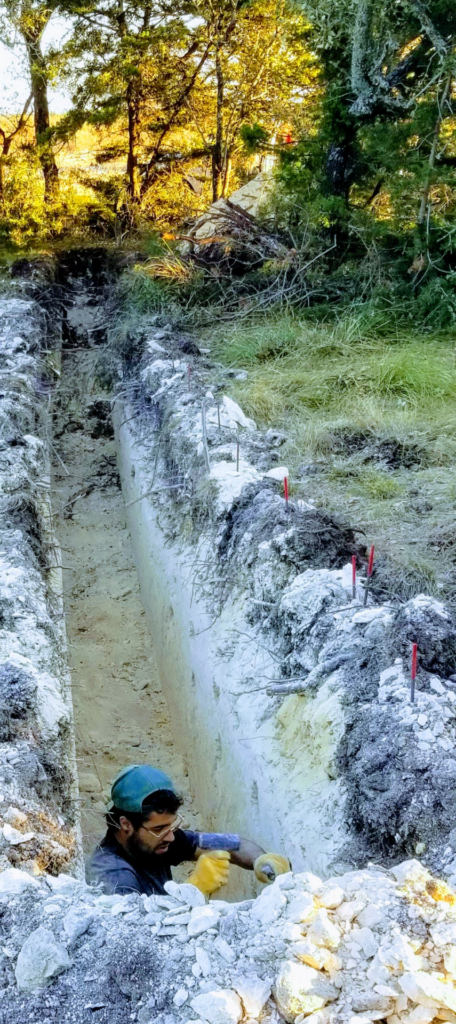Mountain cedar improving Texas Hill Country soils
Texas A&M AgriLife Research findings run counter to popular perceptions about the fast-spreading trees

Love it or loath it, mountain cedar is helping repair century-old ecological damage human activity has inflicted on the Texas Hill Country.
The soil of the Edwards Plateau has benefitted from the 20th century proliferation of cedar, according to new research from Texas A&M AgriLife Research and the Texas A&M College of Agriculture and Life Sciences. The findings of the study, led by graduate student Pedro Leite in the Department of Ecology and Conservation Biology, and recently published in Scientific Reports, run counter to the common perception that cedar has degraded the Hill Country’s fragile ecosystem.
The study does not refute cedar’s negative effects on land, resources and producers. Cedar can out-compete other species of trees and grasses alike, as well as giving ranchers headaches by growing in such dense clusters that livestock cannot reach grazing areas that do remain, said Leite’s advisor, Bradford Wilcox, Ph.D., AgriLife Research ecohydrologist, who was also involved in the multiauthor study.
But cedars have also made positive contributions, such as helping to limit erosion of steep hillsides and providing habitat to the endangered golden-cheeked warbler and formerly endangered black-capped vireo songbirds. Add soil improvement to the pro-side of the ledger because cedars don’t degrade the soil, they enhance it, according to the study.
“We’re not saying, ‘Don’t manage them,’ because we know they present a lot of issues for landowners,” Wilcox said. “What we’re saying is, we recognize their benefits, and that landowners might consider making these plants part of conservation strategies.”
Cedar expands
Mountain cedar – Ashe juniper, technically – has been part of the Hill Country for centuries but became one of the defining features over the last century because of historic overgrazing. When the settlers arrived, the Edwards Plateau, a limestone formation that extends across much of West-Central Texas, was covered by verdant grassland, according to historical records. But cattle, goats and other livestock consumed so much of the native grasses that little was left to hold the soil in place. Much of the soil washed away. The result was a striking landscape of exposed limestone, clear streams and sparse, shrubby vegetation.
The cedar thrived in the new ecosystem. Attempts to limit wildfires, which naturally kept the trees in check, aided the trees’ spread. But as more people flocked to the Hill Country – which now boasts several of the nation’s fastest-growing communities – the wildfires began to threaten peoples’ homes and lives.
In Austin and communities further into the Hill Country, some people consider the cedar an emblem of the region’s rugged beauty, but it can disrupt ranching by overrunning otherwise-grazeable rangeland. Many others consider cedar a fast-spreading pest with pollen that makes every winter an allergy-fogged haze.
Research shows roots soften limestone
Leite’s research demonstrated that soil quality is higher, and the underlying limestone softer and more permeable, in places where stands of cedars and other trees have taken root.
Leite studied two tracts of land at the Texas A&M AgriLife Research Station-Sonora, in the southwest portion of the Edwards Plateau. The adjacent tracts are identical in every relevant way save one, Liete said: one tract has been left all but untouched since the early 1900s, which allowed “woody plant encroachment,” while the other tract has been periodically cleared of trees since the 1940s.
Because the university has owned the tracts for more than a century and kept detailed records of their use, Leite was able to directly compare the soil and the limestone beneath.
He found that soils were deeper and better developed beneath the tree canopies, likely because of additions of organic matter and greater root activity. The bedrock under the canopies also had greater capacity to absorb water, presumably because the tree roots contributed to greater bedrock weathering, the natural process of grinding and disintegration that turns bedrock to soil.
The result is perhaps surprising in light of other recent research that Wilcox and Texas A&M AgriLife researchers conducted into how the proliferation of junipers and other trees affect water recharge into East Texas’s Carrizo-Wilcox Aquifer.
In East Texas, the trees’ “thicketization” impeded rainwater from filtering into the aquifer. But on the Edwards Plateau, the trees enhanced filtration. Wilcox said this variation is due to the difference between the deep, sandy East Texas soil and the rocky terrain of the Hill Country.
In the Hill Country, the enhanced soil quality probably means more and cleaner water seeping into the Edwards Aquifer, the vast system of waterways beneath the Edwards Plateau. That link has not been proven, but Wilcox said it seems likely that the cedars’ influence has improved the quality of the water both for municipalities in Central Texas and above-ground waterways fed by the aquifer, such as Austin’s Barton Creek.
The study concluded that the process set in motion by the cedars leads to “a cycle of mutual reinforcement with the potential for substantial changes within a few decades.”
Wilcox said that soon-to-be-published research from his lab indicates these soil benefits also persist even decades after trees have been removed. Even property owners who remove cedars will still benefit from the spread of the trees, Leite said.
“There’s a legacy effect,” he said. “The benefits appear to last.”


